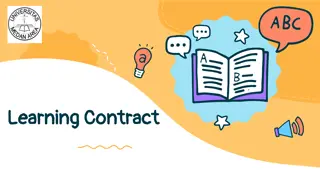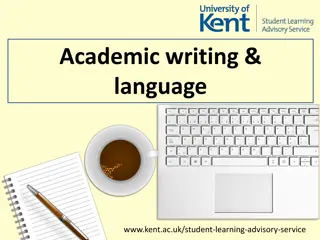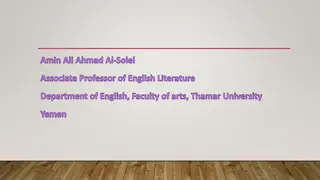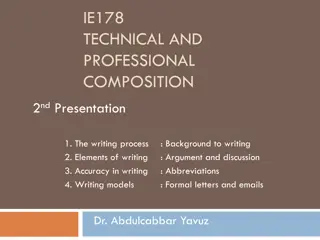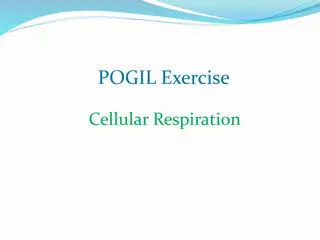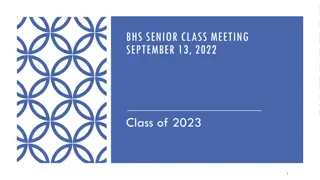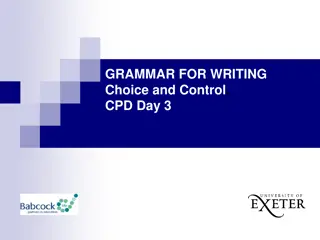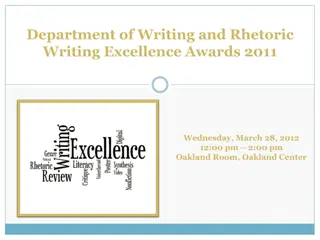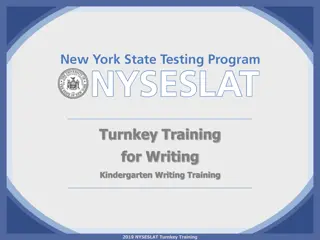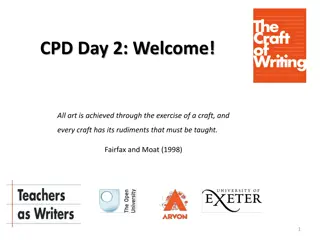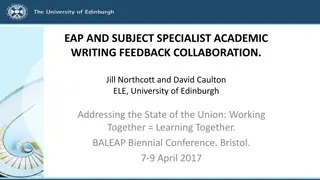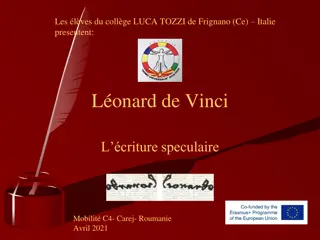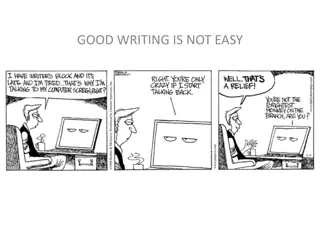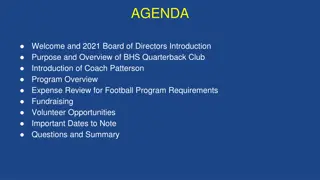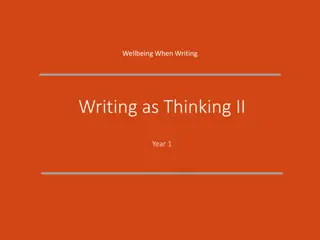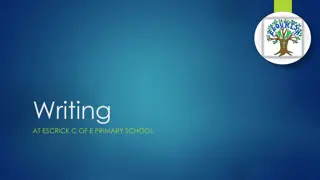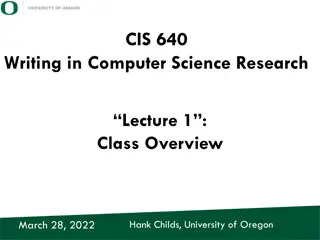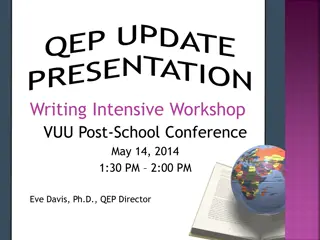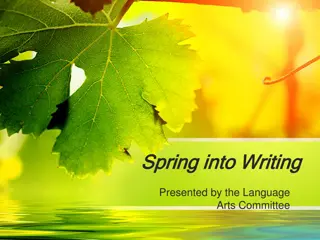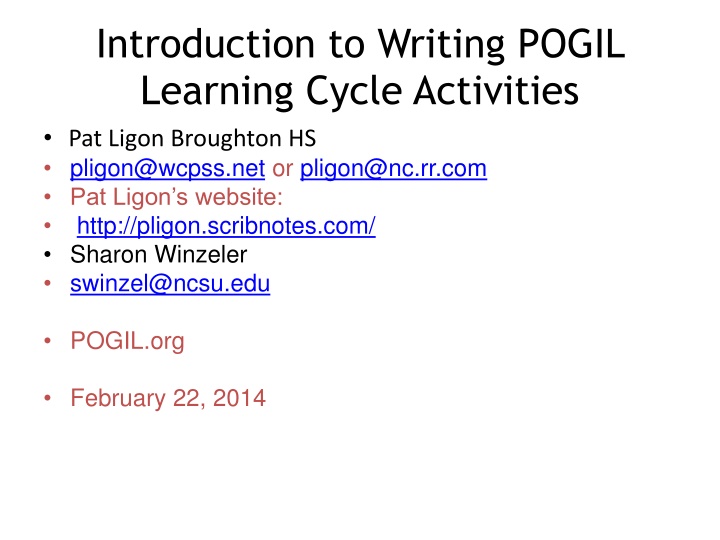
Writing POGIL Learning Cycle Activities Workshop
Engage in creating effective Learning Cycle Activities through POGIL methods led by experienced educators. Explore quality learning objectives, model development, question writing within a Learning Cycle, and future learning goals in POGIL. Understand the constructivist and information processing models of learning to enhance instructional design. Dive into structuring POGIL activities by mapping questions for effective engagement and comprehension.
Download Presentation

Please find below an Image/Link to download the presentation.
The content on the website is provided AS IS for your information and personal use only. It may not be sold, licensed, or shared on other websites without obtaining consent from the author. If you encounter any issues during the download, it is possible that the publisher has removed the file from their server.
You are allowed to download the files provided on this website for personal or commercial use, subject to the condition that they are used lawfully. All files are the property of their respective owners.
The content on the website is provided AS IS for your information and personal use only. It may not be sold, licensed, or shared on other websites without obtaining consent from the author.
E N D
Presentation Transcript
Introduction to Writing POGIL Learning Cycle Activities Pat Ligon Broughton HS pligon@wcpss.net or pligon@nc.rr.com Pat Ligon s website: http://pligon.scribnotes.com/ Sharon Winzeler swinzel@ncsu.edu POGIL.org February 22, 2014
Goals of this workshop Write a Learning Cycle Activity 1. Write 1-3 Quality Learning Objectives for your curriculum concept 2.Use a Model to develop your curriculum concept 3. Use the Learning Cycle to write questions 1. Explore the model 2. Develop concept 3. Application Repeat for each Concept Learning
Future Goals for learning about POGIL 1. Develop Robust Models 2. Learn more about classroom facilitation 3. Use the Learning Cycle to write more questions 1. Explore the model 2. Develop concept 3. Application
Constructivist Model of Learning Learning is not the transfer of material from the head of the teacher to the head of the learner intact, (but) the reconstruction of material in the mind of the learner. It is an idiosyncratic reconstruction of what the learner thinks she understands, tempered by existing knowledge, beliefs, biases, and misunderstandings. Johnstone, A.H. (1997). Chemistry Teaching Science or Alchemy? J. Chem. Educ., 74, 262 268.
Information Processing Model Johnstone, A.H. (1997). Chemistry Teaching- Science or Alchemy? J. Chem. Educ., 74, 262 268. Gazzaniga, M. S., Ivry, R. B., & Mangun, G. R. (2008). Cognitive Neuroscience: The Biology of the Mind (3rd ed.). New York: W. W. Norton & Company.
Models One Model is used for each learning objective Models can be: Pictures Maps Graphs Data tables Images that represent the objective
Explore the Structure of a POGIL Activity By Mapping Questions Instructions: As a group, you have completed the DNA Structure activity, your group will map the questions in the activity by identifying which questions are EIA. Before identifying the question types, you will see examples of what these types of questions are: 1. Exploratory - explore the model 2. Concept Invention develop a concept 3. Application apply the concept
#1 Exploratory Questions What are the three different units of length used in the Model? What type of bacteria is found on this plate? Where on the map in Model 1 is Rome? What is the area of a circle with a radius of 3.5 cm?
#2 Concept Development Questions Convergent Concept Development Which molecule in the list would you predict to have the highest boiling point? What evidence do you have to support your conclusion? What is the mathematical relationship represented by the data points on the graph? What happened in Rome in 17__?
# 3 Application Questions Divergent - Application Where would be the optimal location for a new water treatment plant? Why are the questions in this activity ordered in the way they are? What is the most efficient way to dissolve 10 grams of salt in a sample of water?
Analyze the difference between question types Based on the examples given here, develop a group consensus on definitions for each of the three types of questions. Each definition should be at most two sentences. (5 Minutes)
Map the Activity Instructions: Map the DNA Structure activity by listing the types of questions in the Classification of Matter activity according to the Learning Cycle some questions may be 2 types. E I A E-Exploratory, I-Concept Invention, A-Application (10 min)
Reporting Out question 1 Think about these questions: Does this activity follow the Learning Cycle (EIA) repeating with each model?
Question 2 To what extent is there agreement about the assignments of the phasesoftheLearning Cycle (EIA)?
Learning Cycle Parallels the scientific method Provides context for introduction of new terms Explicitly provides opportunities for critical thinking Karplus, K. & Thier., H.D. (1967). A New Look at Elementary School Science. Chicago: Rand McNally and Co. Piaget, J. (1964). Part I: Cognitive development in children: Piaget development and learning. J. Res. Sci. Teach., 2, 176 186.
Curriculum Learning Objectives Assessment - Communicate expectations - Write focused exam questions Instructional Activities - Identify crucial material - Identify additional/necessary material
Writing Quality Learning Objectives Learning Objectives should be student centered. Today, Iwill lecture students on how to identify which element an atom belongs based on information about subatomic particles. Students will be able to identify to which element an atom belongs based on information about subatomic particles.
Writing Quality Learning Objectives Learning Objectives should be specific. YES Students will be able to write a thesis statement regarding the comparison of two time periods in history. NOT Students will be able to write an essay comparing two time periods in history. YES Students will be able to support their thesis statement with evidence from various sources.
Writing Quality Learning Objectives Learning Objectives should use action verbs. YES Students will predict the periodic trend in ionization energy as one moves down the periodic table using the principles of Coulombic attraction. NOT Students will understand how Coulombic attraction relates to the periodic trend in ionization energy as you move down the periodic table.
Writing Quality Learning Objectives Learning Objectives should be measurable. NOT Students will understand the risk to a population from overprescribing antibiotics. YES Students will relate the overprescribing of antibiotics to the increase of untreatable infections within a population.
Verbs to avoid Know Learn Appreciate Understand
Blooms Taxonomy of Educational Objectives For the Cognitive Domain Evaluation judge, critique, justify, verify, assess, recommend, evaluate, rank Synthesis create, construct, design, improve, produce, propose, plan, integrate, organize, summarize Analysis compare, contrast, classify, categorize, derive, model, dissect, examine, interpret Application calculate, solve, determine, apply, sequence, classify, operate, repair, predict, instruct Comprehension explain, paraphrase, translate, convert, indicate, illustrate Knowledge list, recite, recall, identify, label, order
Content & Process Objectives Process Objectives Content Objectives Students can describe in words and in a diagram how the valves in the heart control the one- way flow of blood. Students can determine the number of protons in an atom of a given element using the periodic table. Students will use the correct conjugation of the verb ser in a sentence. Students will determine the acceleration of a cart from a velocity vs. time graph. Students will evaluate two different solutions for the same problem to determine which is correct. Students will suggest improvements to their group process after being asked to reach consensus on a key question in an activity.
Scaffold for Authors Assessment Question First question you ask yourself. Second question you ask yourself. Third question you ask yourself. What content or skills are needed? What content or skills are needed? What content or skills are needed?
Scaffold for Authors How many protons, neutrons and electrons are in 36Cl1-? Assessment Question (learning objective) First question you ask yourself. Second question you ask yourself. Third question you ask yourself. What content or skills are needed? What content or skills are needed? What content or skills are needed?
Scaffold for Authors How many protons, neutrons and electrons are in 36Cl1-? Assessment Question What is the atomic number for chlorine? First question you ask yourself. Second question you ask yourself. Third question you ask yourself. What content or skills are needed? What content or skills are needed? What content or skills are needed?
Scaffold for Authors How many protons, neutrons and electrons are in 36Cl1-? Assessment Question What is the atomic number for chlorine? First question you ask yourself. Second question you ask yourself. Third question you ask yourself. Atomic numbers are found on the periodic table (whole number) Atomic # = # of protons What content or skills are needed? What content or skills are needed? What content or skills are needed?
Scaffold for Authors How many protons, neutrons and electrons are in 36Cl1-? Assessment Question What is the atomic number for chlorine? What does the 36 in the symbol represent? First question you ask yourself. Second question you ask yourself. Third question you ask yourself. Atomic numbers are found on the periodic table (whole number) Atomic # = # of protons What content or skills are needed? What content or skills are needed? What content or skills are needed?
Scaffold for Authors How many protons, neutrons and electrons are in 36Cl1-? Assessment Question What is the atomic number for chlorine? What does the 36 in the symbol represent? First question you ask yourself. Second question you ask yourself. Third question you ask yourself. Atomic numbers are found on the periodic table (whole number) Atomic # = # of protons Upper left corner of symbol is for the mass number Mass # = # protons + # neutrons What content or skills are needed? What content or skills are needed? What content or skills are needed?
Scaffold for Authors How many protons, neutrons and electrons are in 36Cl1-? Assessment Question What is the atomic number for chlorine? What does the 36 in the symbol represent? How is a charge of 1- achieved? First question you ask yourself. Second question you ask yourself. Third question you ask yourself. Atomic numbers are found on the periodic table (whole number) Atomic # = # of protons Upper left corner of symbol is for the mass number Mass # = # protons + # neutrons What content or skills are needed? What content or skills are needed? What content or skills are needed?
Scaffold for Authors How many protons, neutrons and electrons are in 36Cl1-? Assessment Question What is the atomic number for chlorine? What does the 36 in the symbol represent? How is a charge of 1- achieved? First question you ask yourself. Second question you ask yourself. Third question you ask yourself. Protons are + Electrons are Ion charge = positive charge (# protons) negative charge (# electrons) Upper left corner of symbol is for the mass number Mass number = # protons + # neutrons Atomic numbers are found on the periodic table (whole number) Atomic number = # of protons What content or skills are needed? What content or skills are needed? What content or skills are needed?
Scaffold for Authors How many protons, neutrons and electrons are in 36Cl1-? Assessment Question C A B What is the atomic number for chlorine? What does the 36 in the symbol represent? How is a charge of 1- achieved? First question you ask yourself. Second question you ask yourself. Third question you ask yourself. C1 Protons are + C2 Electrons are C3 Ion charge = positive charge (# protons) negative charge (# electrons) B1 Upper left corner of symbol is for the mass number B2 Mass number = # protons + # neutrons A1 Atomic numbers are found on the periodic table (whole number) A2 Atomic number = # of protons What content or skills are needed? What content or skills are needed? What content or skills are needed?
Write an Activity You will need: 1 or 2 learning objectives 1 model per objective. Model can be picture, map graph, data table, or drawing (can find picture later) From the model labeled as you want, write 2-3 exploratory questions- I will show you Calculus and Economic models Then, write 2-3 concept development question Last write 1-2 application question
Hach Videos http://www.pogil.org/resources/implementati on/interpersonal-effectiveness-videos 1. Video #7 - Listening Skills (positive example of active listening) 2. Video #5 - Communicating Clearly (brusque, no eye contact)
Contact Information Pat Ligon Broughton HS pligon@wcpss.net or pligon@nc.rr.com Pat Ligon s website: http://pligon.scribnotes.com/ Sharon Winzeler swinzel@ncsu.edu POGIL.org February 22, 2014


